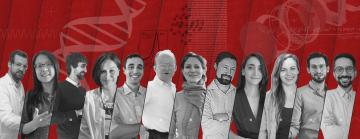SLAC’s Panofsky fellows talk about what makes their research so exciting
From the invisible world of elementary particles to the mysteries of the cosmos, recipients of this prestigious award for early career scientists explore nature at every level.
By Manuel Gnida
Among the many scientists who push the frontiers of knowledge at the Department of Energy’s SLAC National Accelerator Laboratory, the Panofsky fellows stand out. Their Panofsky Fellowship awards recognize the exceptional work they’ve done early in their careers, and gives those careers a big boost by funding five years of research, with an opportunity for continuing to work at the lab after that. This allows them to build their own research groups, freely pursue their scientific visions and connect with the SLAC community and collaborators around the world.
Founded in 1989 to support the lab’s core work in particle and accelerator physics, the fellowship expanded its scope in 2015 to reflect SLAC’s transition to becoming a multipurpose lab. Today it also supports research in X-ray science, energy science, chemical science, biosciences, computer science, materials science and studies of matter in extreme conditions.
In these brief profiles, the 11 most recent Panofsky fellows share their excitement about their research. Click here to learn more about the fellowship and how to apply.
Understanding the history of our universe
Zeeshan Ahmed

2015 Panofsky fellow
Current position: lead scientist, SLAC
Project: cosmology, cosmic microwave background, detectors
Ahmed studies the cosmic microwave background (CMB) – the afterglow of the red-hot plasma that filled the universe shortly after its birth in the Big Bang almost 14 billion years ago. To capture and analyze this faint glow, he builds sophisticated cameras and installs them on telescopes in some of the driest and most remote places in the world, such as Chile's Atacama Desert and the South Pole.
Measuring the CMB helps researchers figure out exactly how the universe started and why it looks like it does today. Future generations of CMB experiments will increase the precision of these observations, potentially bringing transformative discoveries in fundamental physics.
It’s a thrilling research topic to explore, Ahmed says: “We would love for young minds with an interest in STEM to come try internships in our lab and see if they find our work as exciting as we do.”
More information: researcher profile
Wai Ling “Kimmy” Wu

2020 Panofsky fellow
Current position: associate scientist, SLAC
Project: cosmology, cosmic microwave background, cosmic inflation
Wu also takes a close look at the CMB. She uses observations of this light to learn about the infant universe when it was less than a second old. Scientists believe that’s the time when the extremely dense universe may have undergone a period of rapid expansion, ballooning exponentially in size in a tiny fraction of a second.
This process of cosmic inflation would have created ripples in spacetime known as gravitational waves, and Wu is looking for signs of them in the CMB.
Inflation occurred at an energy scale that’s far beyond what can be described by everyday physics, leaving room for making unworldly discoveries. “By observing the cosmos,” Wu says, “I could be witnessing effects from physical processes that cannot be reproduced on Earth.”
More information: research website
Daniel Gruen
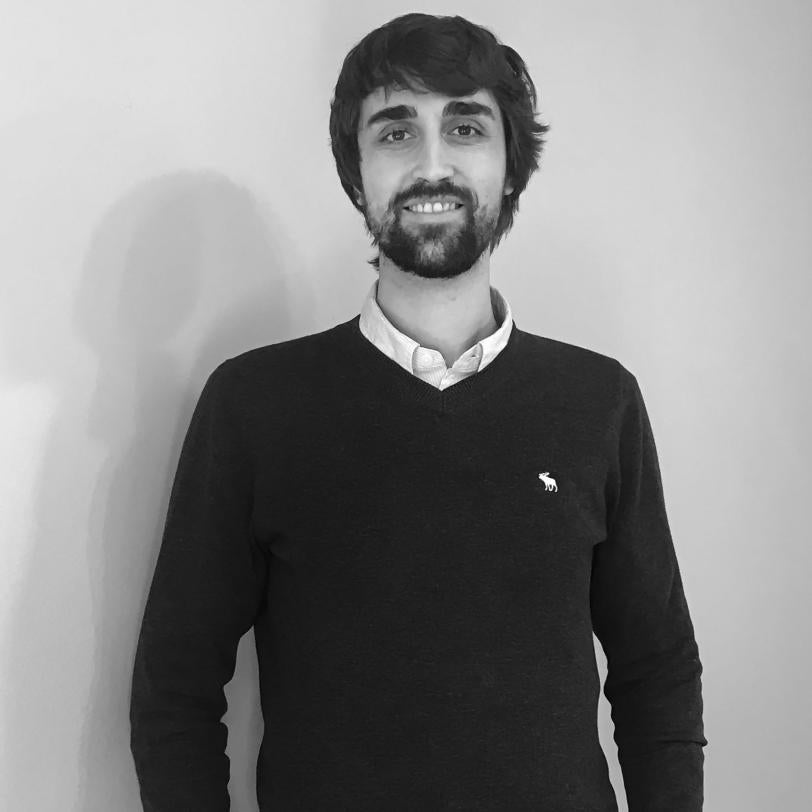
2019 Panofsky fellow
Current position: associate scientist, SLAC
Project: cosmology, dark matter, dark energy
Gruen wants to understand how the evolution of the universe produced the structures we observe today, including galaxies like our own Milky Way. Using data from various telescopes, he studies the distribution of matter in the universe at various times in cosmic history.
His goal is to understand the physics behind two key ingredients of our universe: dark matter, an invisible form of matter that is almost six times as common as regular matter, and dark energy, an unknown force that speeds up the expansion of the universe.
“What’s truly exciting is that we live in a time where we are able to build experiments that might actually shed light on these mysteries,” Gruen says. “Maybe in a generation or two, cosmology won’t be such a big puzzle anymore.”
In the fall, Gruen will continue his research in a new position as the chair of astrophysics, cosmology and artificial intelligence at Ludwig Maximilian University in Munich, Germany.
More information: results of the Dark Energy Survey
Imaging the world in atomic detail with X-rays
Emma McBride
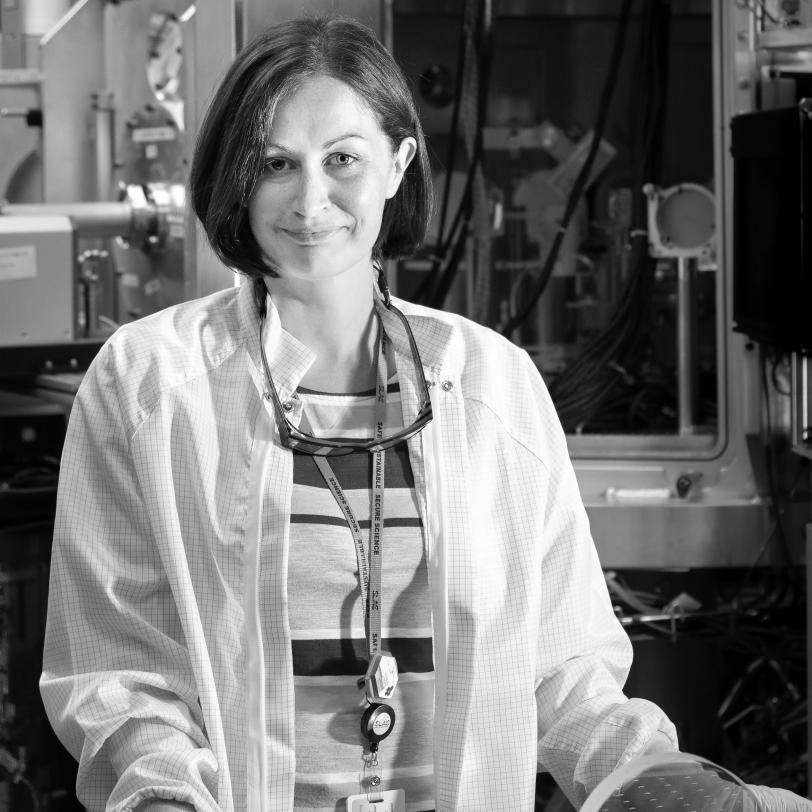
2018 Panofsky fellow
Current position: associate scientist, SLAC
Project: X-ray science, high energy density science
McBride’s research has ties to astrophysics, too, but she doesn’t get her data from the sky. Working in a lab, she creates extreme states of pressure and temperature in samples of various materials to mimic conditions like those at the centers of the Earth and the giant planets or in nuclear fusion processes that power stars.
Using extremely bright and short light pulses from SLAC’s X-ray laser, the Linac Coherent Light Source (LCLS), she can determine what happens on an atomic level in such extreme conditions.
“Studying matter in extreme conditions touches on so many interesting phenomena,” McBride says. “The breadth of the field for me is what is so enticing about it.” In addition to the physics of planets and stars, scientists can also use these tools to study impact events, such as asteroid hits on our planet; search for novel materials with useful properties, such as superconductivity; and analyze stress and failure in materials.
McBride has recently been awarded a DOE Early Career Research Program award to continue her research at SLAC.
More information: SLAC public lecture
Cornelius Gati
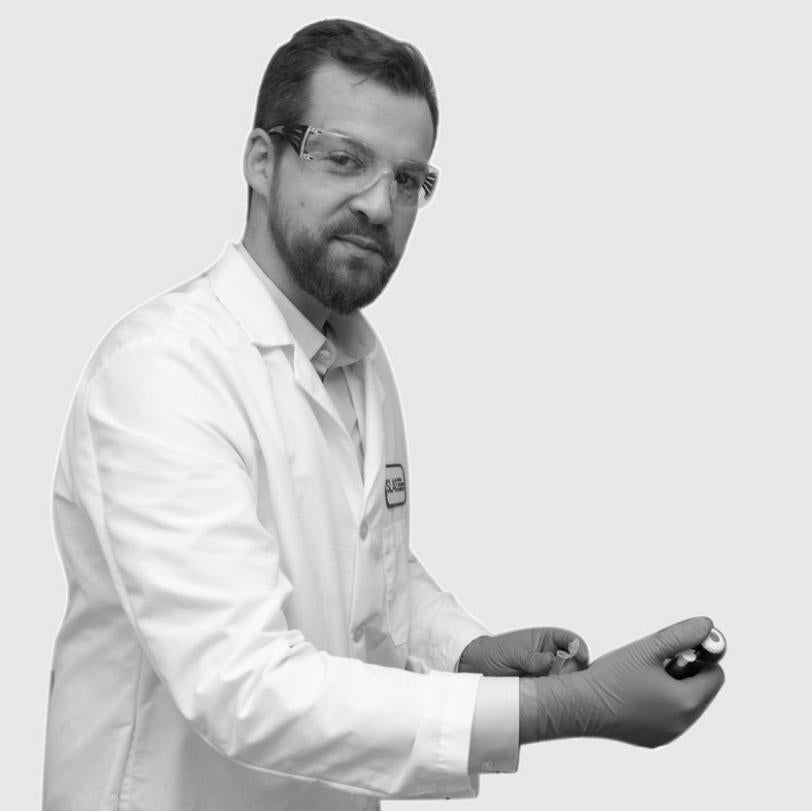
2017 Panofsky fellow
Current position: assistant professor of biology, University of Southern California
Project: bioimaging, neuroscience
Gati uses X-rays and a technique known as cryogenic electron microscopy (cryo-EM) to image how neurons communicate on the atomic scale – work that could help explain important functions of the brain, such as memory and cognition.
Specifically, his team determines the atomic structures of proteins embedded in a neuron’s cellular membrane that play key roles in neural communication. Those structures also provide blueprints for drug development to treat neurological diseases, such as psychotic disorders or Parkinson’s disease.
As for his hopes for future advances in this field, Gati says, “Currently we need to extract the proteins from the neurons for our experiments, but it would be incredibly important to be able to study them in their natural environment – right inside a neural membrane.”
More information: research lab website
Franklin Fuller

2017 Panofsky fellow
Current position: associate scientist, SLAC
Project: X-ray science, catalysis
Fuller uses powerful bursts of X-ray light from LCLS to study electron motions in individual atoms during chemical catalysis, the process through which certain molecules and materials speed up chemical reactions. This is a very difficult task in systems like enzymes – biological catalysts – because there are many atoms that interact with each other.
Fuller works on new ways of analyzing data from experiments, such as using machine learning, a form of artificial intelligence, to extract information about ultrafast electron motions and make new types of measurements. His work also aims to overcome experimental challenges associated with the fact that X-ray laser light is chaotic in nature, meaning that two light flashes are never exactly the same.
“My project sits at the crossroads of many disciplines, from computational methods to physical chemistry to X-ray optical design,” Fuller says. “In this synthesis, one can advance many fields at once.”
Tais Gorkhover
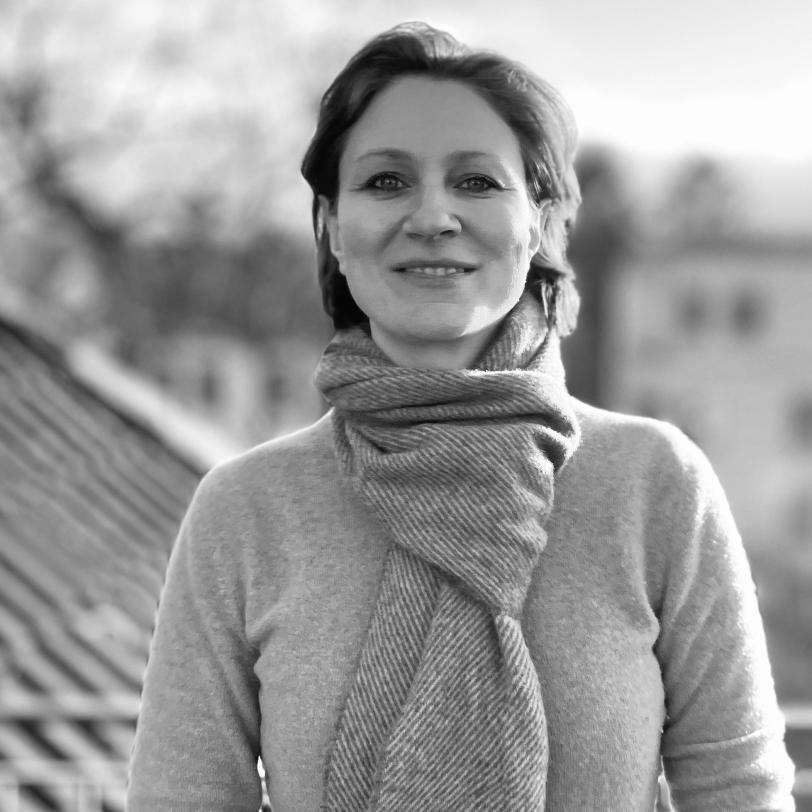
2016 Panofsky fellow
Current position: full professor of experimental physics, University of Hamburg, Germany
Project: X-ray science, X-ray imaging
Gorkhover develops new imaging techniques that use extremely short and intense X-ray light flashes to explore nanoscale dynamics that are crucial for understanding and shaping the world around us.
“Many processes governing us and our surroundings happen on scales invisible to the naked eye,” Gorkhover says. “SARS-CoV-2 viruses, for example, have a diameter much smaller than the thickness of a human hair, yet their behavior is capable of affecting lives and economies all over the world. My research is dedicated to visualizing processes such as energy transfer at the nanometer to atomic scale using the amazing power of X-ray free-electron lasers.”
Her dream experiment would be a clever combination of techniques that would allow her to visualize and manipulate the transformations of individual macromolecules in their native state during chemical reactions.
More information: research website
Creating new opportunities for discovery with accelerators and X-ray lasers
Ago Marinelli

2015 Panofsky fellow
Current position: assistant professor of photon science and of particle physics and astrophysics, SLAC/Stanford
Project: X-ray laser and accelerator development, attosecond science
Light bursts from X-ray lasers like LCLS already let scientists take snapshots of atomic motions that occur within only a few femtoseconds, or millionths of a billionth of a second. However, some processes, such as the initial response of electrons during a chemical reaction, are even faster than that, and happen before the much heavier atomic nuclei budge. Marinelli develops techniques for making movies of the speedy electrons.
Studies on these sub-femtosecond time scales could reveal, for example, how the absorption of light during photosynthesis almost instantaneously pushes electrons around and kicks off a cascade of much slower events that ultimately generate oxygen.
“Electron motion is at the basis of many chemical and physical processes,” Marinelli says. “Being able to observe them in real time will open up a new window into how our world works and would allow us to test our existing theories on the most fundamental level.”
More information: researcher profile
Auralee Edelen

2020 Panofsky fellow
Current position: associate scientist, SLAC
Project: particle accelerators, machine learning
Beams of accelerated electrons power electron microscopes, X-ray lasers, medical accelerators and other devices. To optimize the performance of these devices, operators must be able to analyze and tweak the quality of the beams – a time-consuming task that involves adjusting the accelerator that produces the beams in a number of different ways.
Edelen’s research explores the use of machine learning to speed up the optimization process. The approach could also produce new insights into the physics of high-energy particle beams and make it easier for operators to find new accelerator settings that enable novel experiments.
“We draw inspiration from how human operators control the accelerator and then try to expand beyond what humans are capable of doing,” Edelen says. “Our work is at the cutting edge of several areas of machine learning research, and accelerators are an interesting test bed for new techniques and ideas in the field.”
More information: links to talks
Exploring the fundamental building blocks of nature
Michael Kagan

2016 Panofsky fellow
Current position: associate scientist, SLAC
Project: ATLAS experiment, Higgs boson, machine learning
Kagan uses data from the ATLAS experiment at the Large Hadron Collider (LHC) at CERN in Europe to study the famous Higgs boson – the most recently discovered fundamental particle, and the one through which particles acquire their mass. The properties of the Higgs boson could shed light on that process and on a number of other unsolved mysteries in particle physics, including the nature of dark matter and the dominance of matter over antimatter in the universe.
Higgs bosons are produced when LHC’s powerful proton beams collide. Scientists analyze the particle debris from those collisions to learn about the properties of the Higgs boson. This analysis is extraordinarily complex because signatures of the Higgs boson are hidden in a vast ocean of background signals. A central aspect of Kagan’s work is developing machine learning tools needed to recognize and isolate these signatures.
“One of my biggest hopes for the next few years is that we can observe how two Higgs bosons interact with each other – an extremely rare process that can tell us a great deal about how particles gain mass,” Kagan says. He’s also rooting for the construction of a next-generation high-energy particle collider that he hopes to help develop and then use to study Higgs bosons with a precision never achieved before.
More information: ATLAS group at SLAC
Caterina Vernieri

2018 Panofsky fellow
Current position: associate scientist, SLAC
Project: ATLAS experiment, Higgs boson, detector development
Vernieri’s project also revolves around the Higgs boson. She is part of a team developing a billion-pixel particle physics “camera,” the biggest and most precise one ever built, that will be the core component of an upgrade to the ATLAS detector at the LHC.
Once upgrades to ATLAS and LHC are complete, researchers will be able to measure the properties of Higgs bosons with unprecedented precision, opening the door to discoveries beyond the Standard Model – the particle physics theory that describes the known particles and forces.
“What I study is invisible to the naked eye, and we have to invent sophisticated tools to observe it,” Vernieri says. “I like the fact that our research wants to answer fundamental questions about nature, and we have to overcome monumental technical challenges to get there. These efforts take thousands of scientists from institutions around the world, all working together to pursue the same scientific goals.”
Vernieri has recently been awarded a DOE Early Career Research Program award to continue her research at SLAC.
More information: SLAC Public Lecture
LCLS is a DOE Office of Science user facility. For questions or comments, contact the SLAC Office of Communications at communications@slac.stanford.edu.
SLAC is a vibrant multiprogram laboratory that explores how the universe works at the biggest, smallest and fastest scales and invents powerful tools used by scientists around the globe. With research spanning particle physics, astrophysics and cosmology, materials, chemistry, bio- and energy sciences and scientific computing, we help solve real-world problems and advance the interests of the nation.
SLAC is operated by Stanford University for the U.S. Department of Energy’s Office of Science. The Office of Science is the single largest supporter of basic research in the physical sciences in the United States and is working to address some of the most pressing challenges of our time.
